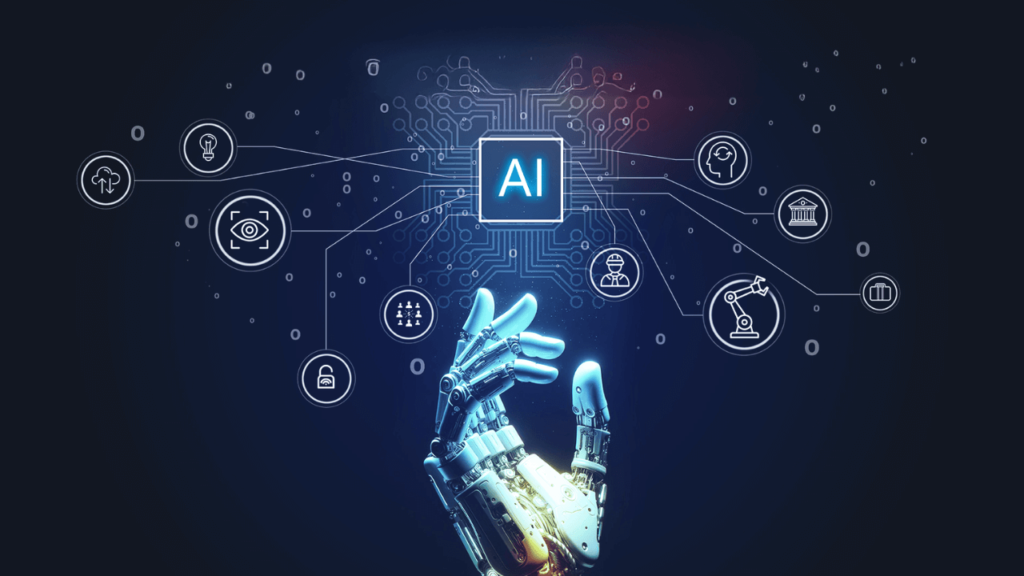The MIT AI Report: Why 95% of Corporate AI Projects Are Failing and What to Do About It

The artificial intelligence landscape is defined by a profound paradox. On one hand, a torrent of capital is flooding the market, with investors betting trillions on a technology poised to reshape the global economy. On the other, a groundbreaking report from the Massachusetts Institute of Technology (MIT) reveals a sobering reality: the vast majority of these ambitious projects are collapsing before they deliver any meaningful value.
This disconnect between unprecedented hype and underwhelming results has sparked fears of a new tech bubble—reminiscent of the dot-com crash—leaving executives and investors to question what has gone so wrong.
This analysis dissects the crucial findings of MIT’s landmark report “The GenAI Divide: State of AI in Business 2025” from the NANDA initiative. By synthesizing its data with insights from MIT’s CSAIL and the Task Force on the Work of the Future, this article explains why enterprise AI is stalling—and offers a strategic blueprint for achieving genuine transformation.
The Great Disconnect: Hype vs. Harsh Reality
The AI boom is fueled by staggering speculation. In just the first half of 2025, over $44 billion was poured into AI startups, already surpassing the total for all of 2024. Projections suggest AI investment could hit $200 billion this year, with Wall Street expecting the top seven tech giants to generate $600 billion in extra annual revenue from AI.
But the reality is stark. MIT’s report shows 95% of corporate generative AI projects fail to deliver returns or measurable productivity gains. Only 5% achieve what the study calls “rapid revenue acceleration.”
Independent testing reinforces this:
Even top AI models reliably complete only ~30% of office tasks.
AI agents finish just 24% of real-world jobs (as of April 2025).
62% of employees believe AI is “significantly overhyped.”
The problem isn’t slow adoption but a systemic inability to scale pilots into production. MIT calls this the “pilot paradox”: 90% of enterprises test AI solutions, but the biggest firms—with the most pilots—are the least successful at scaling. Bureaucracy, fragmented strategy, and flawed execution plague large organizations.
The “Learning Gap”: Why AI Stalls in the Enterprise
The report identifies the learning gap as the core reason for failure. AI systems today are digital amnesiacs: they don’t retain feedback, learn workflows, or adapt to context.
Individual vs. Enterprise Use: Tools like ChatGPT work for personal tasks (emails, brainstorming, coding), but collapse in enterprise settings where memory and contextual learning are vital.
The Verification Tax: Because models can be “confidently wrong,” employees must double-check outputs. This constant verification erodes trust and negates productivity gains.
Resource Misallocation: Over half of AI budgets go to flashy sales/marketing pilots, while the biggest ROI lies in back-office automation (logistics, BPO reduction, operations).
The result: billions spent on projects designed to look innovative but incapable of delivering real value.
The “Shadow AI” Economy: Bottom-Up Success
While top-down corporate AI fails, a grassroots “shadow AI” economy is thriving.
Only 40% of companies officially license LLMs.
But employees in 90% of companies use AI personally for work—often without IT’s approval.
Use cases: drafting emails (70%), analysis (65%), coding, and brainstorming.
Instead of banning it, MIT suggests leaders treat shadow AI as free market research. It reveals what employees actually need—user-friendly, flexible tools.
This also explains the productivity paradox: AI gains are happening at the individual level but not showing up in corporate or national statistics because they aren’t captured in official workflows.
A Tale of Two Adopters: Startups vs. Giants
MIT’s research highlights a striking divide:
Startups: Narrowly focused, disciplined, and ROI-driven. Many scale from $0 to $20M in revenue within a year by solving a single problem.
Corporations: Engage in “AI theater,” spreading resources across dozens of disconnected pilots that rarely scale.
The lesson? AI success is about problem-focus, not resource abundance. Startups thrive on discipline; corporations drown in overabundance.
The Future of Work: Jobs, Skills, and AI Literacy
Despite fears of mass layoffs, MIT finds AI-driven job loss is limited to vulnerable functions (customer support, admin processing, basic software tasks). Reductions are modest—typically 5–20%—and highly industry-specific:
Most exposed: Tech & media.
Least exposed: Healthcare, energy, advanced manufacturing.
Instead of mass unemployment, the real transformation is in skills. AI literacy is now a top hiring priority. Young graduates adept with AI tools often outperform seasoned professionals, signaling a new digital skill divide.
Debunking Common Myths
| Myth | MIT Report Reality |
|---|---|
| AI will replace most jobs soon. | Layoffs are limited; impact is gradual and skill-based. |
| Generative AI is already transforming business. | Adoption is high, but transformation is rare—only 5% scale. |
| Large firms are slow to adopt. | 90% explore AI, but few succeed in scaling pilots. |
| The best firms build their own AI. | Internal builds fail twice as often as vendor partnerships. |
| The barrier is model quality or regulation. | The barrier is the learning gap. |
Bridging the GenAI Divide: A Blueprint for Success
The MIT AI report outlines four key strategies:
Partner, don’t build in-house
External AI tools succeed 2x more often than internal builds.
Treat vendors as BPO partners, not just SaaS providers.
Decentralize implementation
Empower frontline employees and managers—the real “AI prosumers.”
Follow ROI, not visibility
Reallocate budgets from marketing pilots to high-ROI automation (logistics, operations, BPO reduction).
Close the learning gap with “agentic AI”
Invest in adaptive systems that can learn, remember, and improve over time.
Conclusion: An Urgent Call to Action
MIT’s findings are clear: the AI revolution is real, but most enterprises are on the wrong path. Top-down, hype-driven projects have a 95% failure rate.
The future lies in:
Grassroots adoption (shadow AI).
Startup-style focus and discipline.
Agentic AI systems that learn and adapt.
The next 12–18 months are critical. Organizations that act now—focusing on targeted, adaptive, high-ROI solutions—will build lasting competitive advantage. Those that chase hype with fragmented pilots risk being left behind in the coming AI shakeout.
